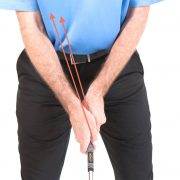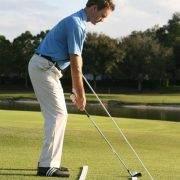Full Swing Walk Through
Certainly, the golf swing is a complicated motion. Every golfer brings to the table unique body structure, athletic ability, physical impediments, mental approaches, experience and idiosyncrasies. The instructor must account for individuality in the golf swing while also instilling the necessary fundamentals imperative for improved and consistent ball striking. Bear in mind that the concepts outlined here are in general terms and designed for the casual or average golfer in order to avoid confusion.
The Take-Away
The initial move of the golf club away from the ball is begun with the core muscles, not with the arm and hand muscles. The grip and hand position established at address remain in tact as the shoulders and torso are rotated smoothly away from the ball. This should remain a one-lever motion, with the straight line from the clubhead up the left arm remaining unbroken, until the clubhead is horizontal to the ground.
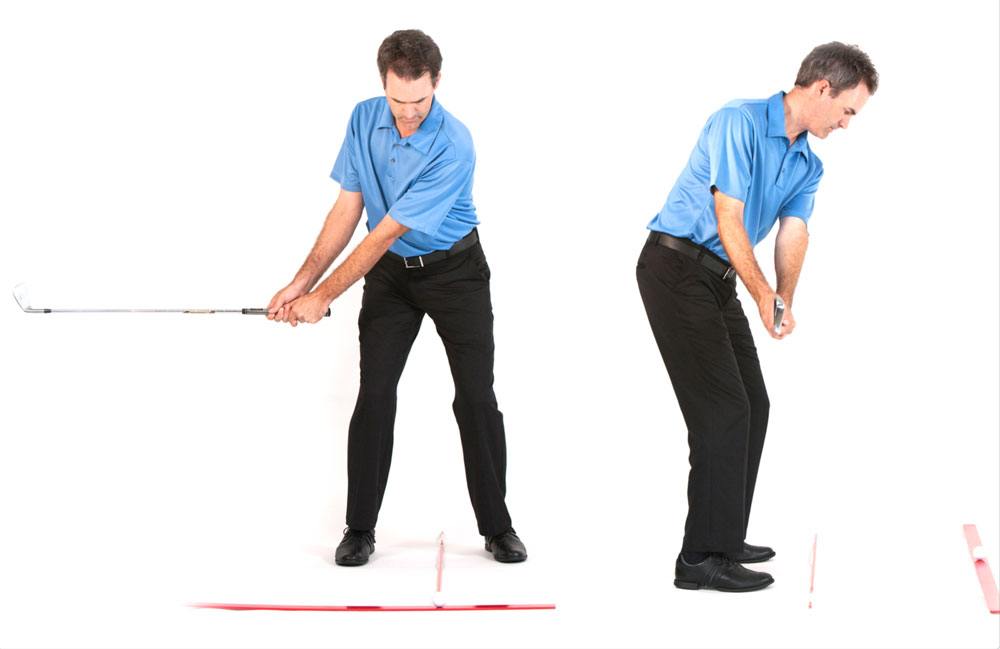
The Mid-Swing Position
This is a very important benchmark in the golf swing (particularly for beginners) and occurs when the shaft of the golf club is horizontal to the ground (9:00 Position). At this point, the upper body/shoulders should have rotated approximately 45 degrees with the left shoulder beginning to come underneath the chin. The left arm remains extended while the right arm begins to fold slightly downward. The one-lever take-away (no wrist activity) is still in tact and only a slight weight shift to the right side is detectable in the lower body. The club itself is horizontal with the shaft parallel to the target line. The butt end of the club should point targetward and the shaft should be parallel above a line drawn across the feet. The toe of the clubhead has rotated skyward to about the 11:00 position as perceived by the player.
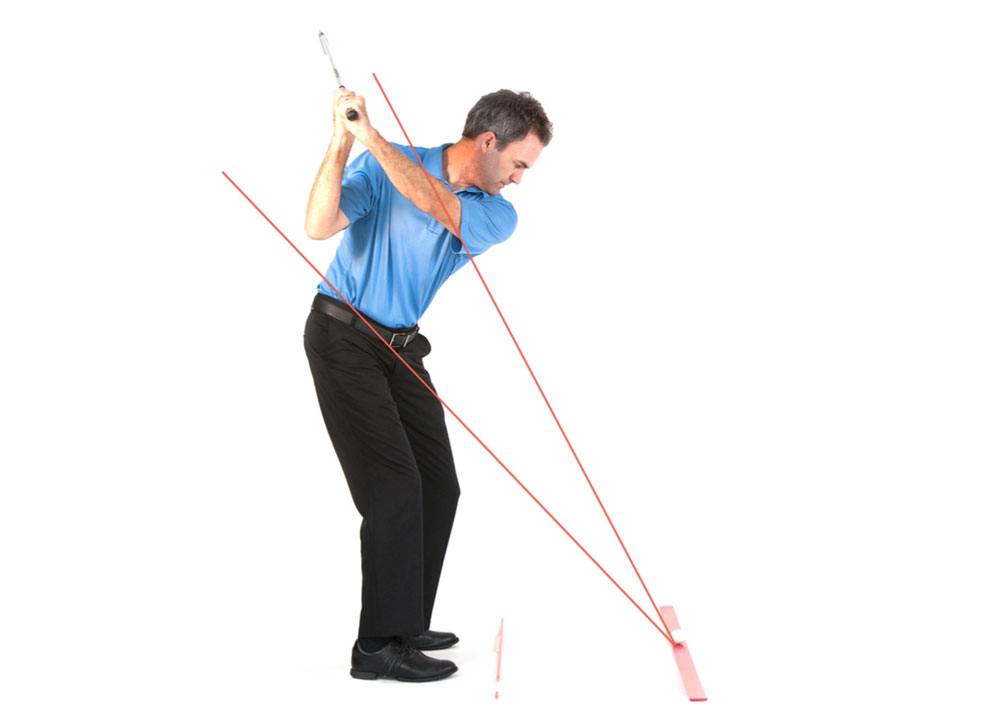
The Top of the Swing
From the mid-swing position, as the body continues to rotate, a wrist hinge begins employing a second lever in the golf swing. The right arm continues to fold while the left arm maintains the radius of the circular path of the golf club. At the top of the swing, a 90 degree angle is formed between the left forearm and the shaft of the golf club. The shaft is once again parallel to the target line with the butt end pointing directly away from the target. Shoulders have rotated 90 degrees such that the player’s back is completely turned to the target and the left shoulder is under the chin. Body weight has shifted to the inside part of the firm, but flexed right leg. The left heel is allowed to raise off the ground, but only slightly if necessary. Resistance and “coil” should be felt throughout the body at this point.
Transition
The change of direction from the backswing to the downswing must be smooth and never hasty. With the body coiled properly, it is vital to uncoil in the correct sequence of muscle movements in order to achieve full power and accuracy.
The First Move Down
This is the most critical part of a golf swing. The downswing begins with a slight weight shift targetward in the lower body and a chain reaction up through the hips, into the torso, out to the shoulders and arms, and finally the hands…much like throwing a baseball. As these body parts begin to shift to the left and subsequently rotate, the 90 degree hinge in the left wrist is retained (may even increase). The hands are pulled in a downward motion, on a plane toward the ball, accelerating smoothly as a result of the body’s movement.
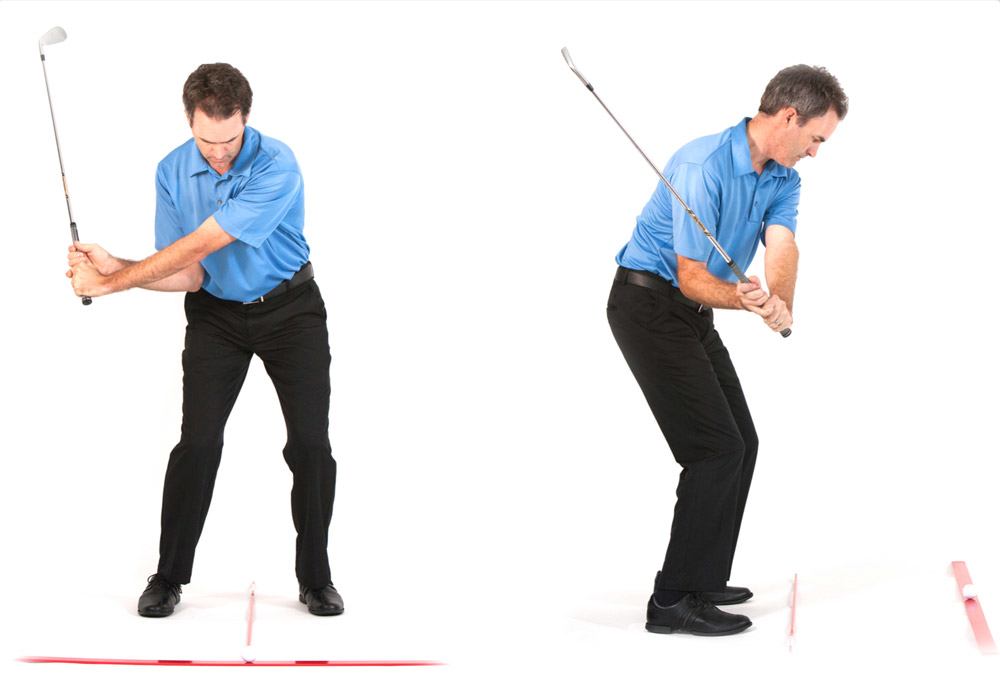
Pre-Impact Position
The hands and clubhead continue to approach the ball from an inside path around the body. The club should pass through or underneath the imaginary 9:00 position of the club created in the mid-swing position. The left arm remains extended while the right arm is still folded with the elbow close to the right hip. The increased angle in the wrist hinge is maintained to this point where the hands are nearly above the ball and the clubhead is still above waist height. Body weight has shifted targetward with about 80% on the left side and 20% on the right.
Impact
At impact, the club is delivered to the back of the ball with both arms extended and with the strong rotational forces of the swing causing the “release” of the clubhead. It is essential to feel the forces of the swing bring the clubhead to the ball and not to “cast” the club at the ball with your hands in the downswing. The hands are slightly left of their original address position at impact and are still leading the clubhead through the ball. Body weight has shifted almost entirely to the left side with the right heel just beginning to raise off the ground. The left foot is flat on the ground accepting the weight and the left leg is straightened. The hips have rotated to an open postion.
The Extension
From impact to the extension, the clubhead finally passes the hands on the path around the body. Extension occurs with both arms fully extended and the club has reached the 3:00 position. This should be nearly a mirror image of the 9:00 position or mid-swing described earlier. The shaft is parallel to the target line and above a line drawn across the feet. The clubhead point targetward and the toe of the club has rotated skyward once again. Body weight continues to shift targetward, hips and shoulders rotating, and the right heel continues to roll off the ground.
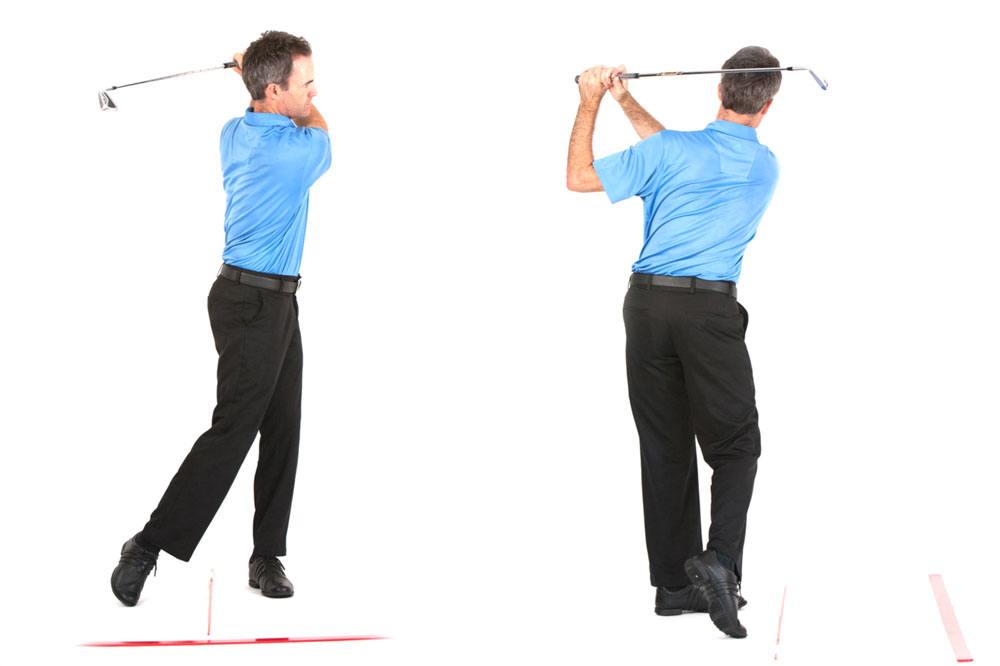
The Finish
Nearly 100% of the body’s weight is on the straight left leg. The left arm collapses as the right arm remains extended. The right heel has rotated completely skyward and the right foot bears no weight. The chest and belt buckle have rotated and face the target. Hands come to rest comfortably over the left shoulder in a relaxed and comfortable position. The golf swing is only complete with a full and balanced finish.






